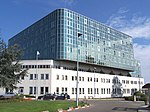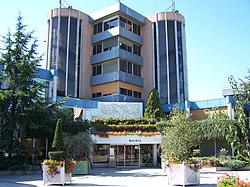Paris France Temple
2017 establishments in France21st-century Latter Day Saint temples21st-century architecture in France21st-century churches in FranceBuildings and structures in Yvelines ... and 4 more
Churches in ParisLatter Day Saint movement stubsTemples (LDS Church) completed in 2017The Church of Jesus Christ of Latter-day Saints in France

The Paris France Temple is a temple of the Church of Jesus Christ of Latter-day Saints (LDS Church) in Le Chesnay, a suburb of Paris, France, and is located near Versailles. The Paris France Temple is the first temple built in Metropolitan France, and the second in France, after the Papeete Tahiti Temple.
Excerpt from the Wikipedia article Paris France Temple (License: CC BY-SA 3.0, Authors, Images).Paris France Temple
Boulevard Saint-Antoine, Versailles
Geographical coordinates (GPS) Address Website External links Nearby Places Show on map
Geographical coordinates (GPS)
| Latitude | Longitude |
|---|---|
| N 48.817891666667 ° | E 2.1231722222222 ° |
Address
Temple de l’Église de Jésus-Christ des Saints des derniers jours
Boulevard Saint-Antoine
78150 Versailles, Notre-Dame
Ile-de-France, France
Open on Google Maps








